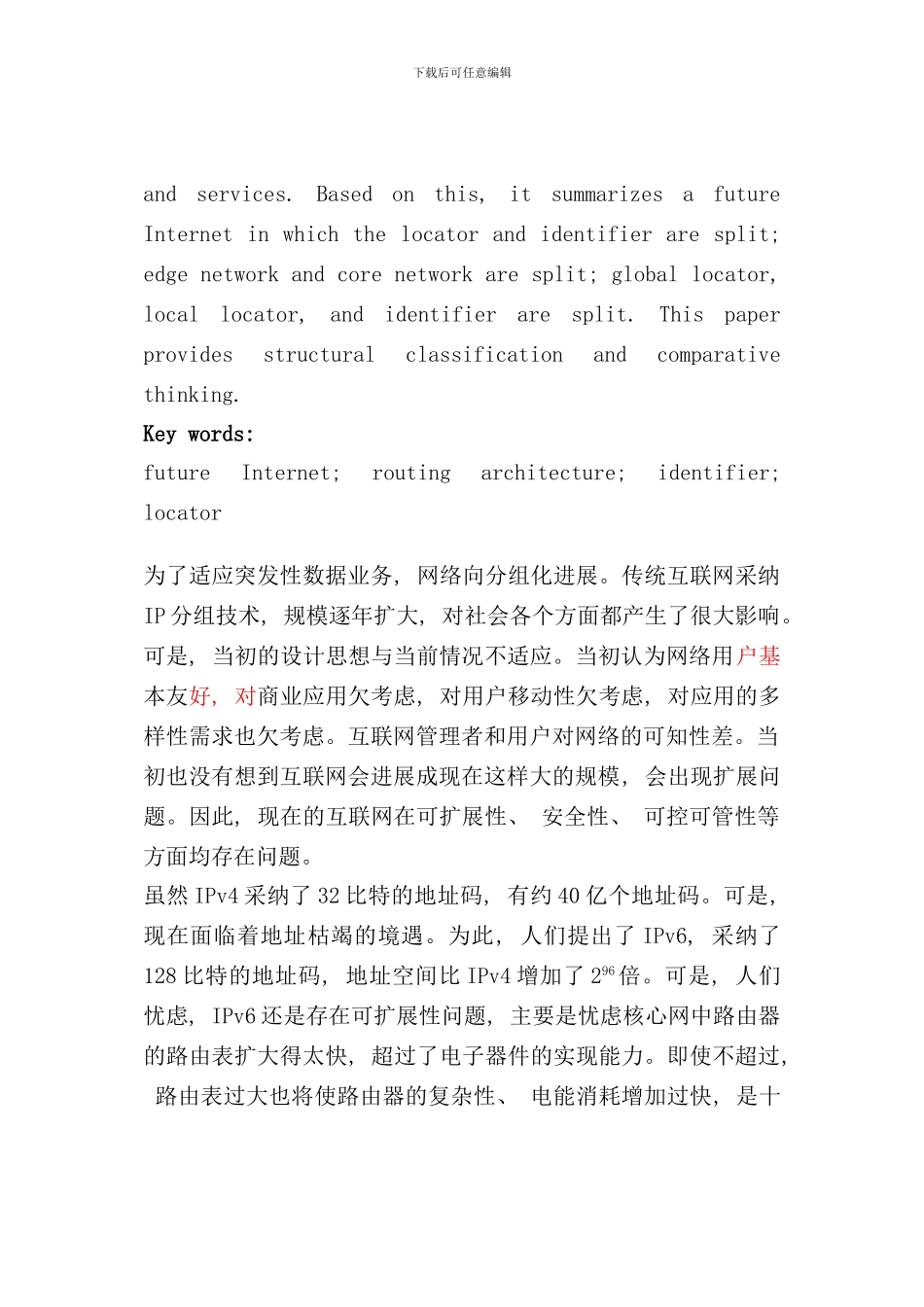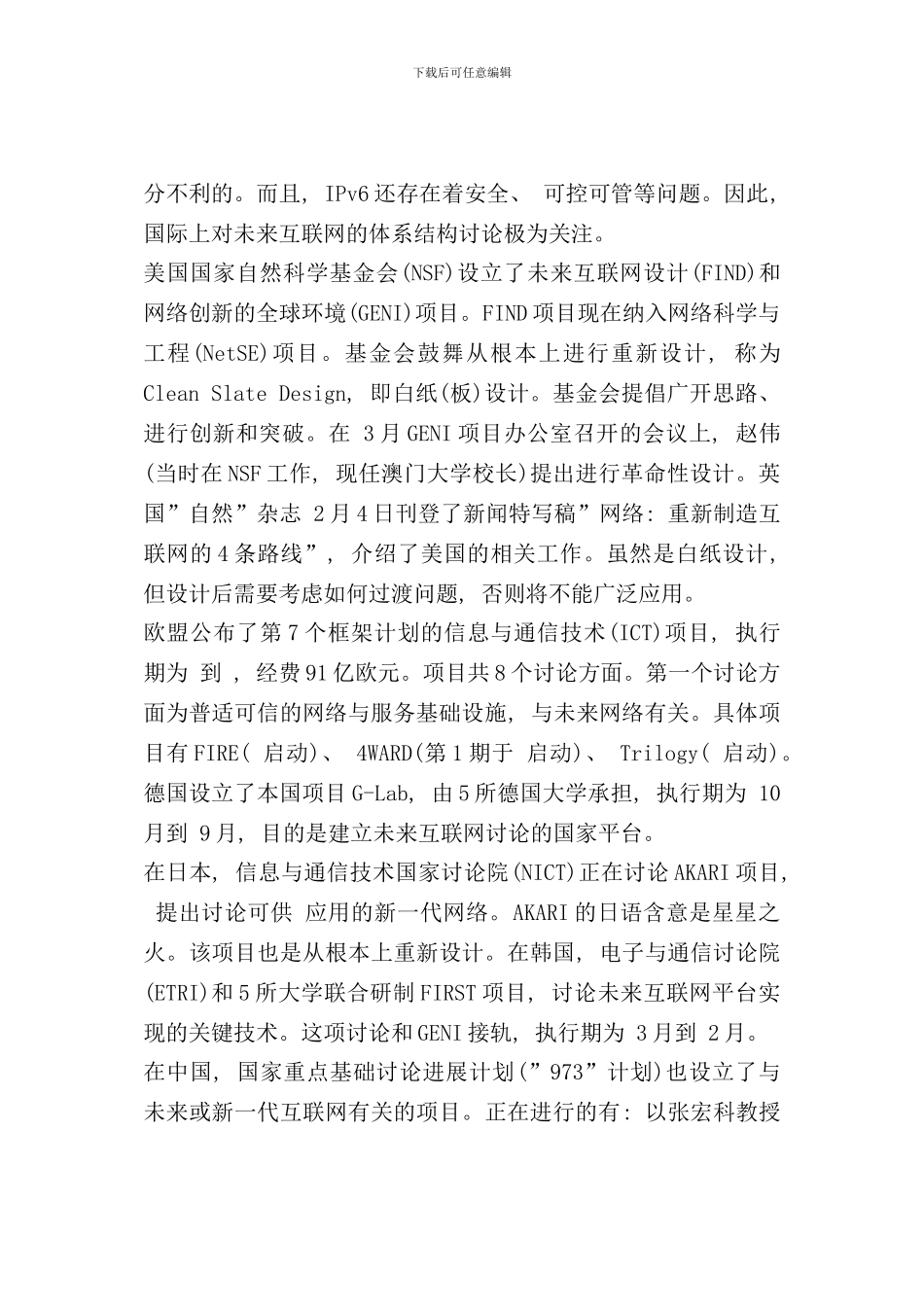下载后可任意编辑未来互联网选路体系结构讨论Research on Routing Architectures for the Future Internet李乐民/LI Lemin(电子科技大学通信与信息工程学院, 四川 成都 610054)(School of Communication and Information Engineering, University of Electronic Science and Technology of China, Chengdu 610054, China)中图分类号: TP393.03 文献标志码: A 文章编号: 1009-6868 ( ) 02-0000-00基金项目: 国家重点基础讨论进展规划 (”973”计划)课题( CB307104)摘要: 文章认为能够经过身份、 位置、 选路、 服务 4 个要素, 对各种未来网络的体系结构进行分类和比较。基于这个观点, 文章归纳了位置标志和身份标志分离, 边缘网络和核心网络分离, 以及全局位置标志、 局部位置标志和身份标志分离的未来网络的体系结构, 并提供了结构的分类和比较思路。关键词: 未来互联网; 选路体系结构; 身份标志; 位置标志Abstract: This paper suggests the future Internet can be compared and classified according to identity, location, routing, 下载后可任意编辑and services. Based on this, it summarizes a future Internet in which the locator and identifier are split; edge network and core network are split; global locator, local locator, and identifier are split. This paper provides structural classification and comparative thinking. Key words: future Internet; routing architecture; identifier; locator为了适应突发性数据业务, 网络向分组化进展。传统互联网采纳IP 分组技术, 规模逐年扩大, 对社会各个方面都产生了很大影响。可是, 当初的设计思想与当前情况不适应。当初认为网络用户基本友好, 对商业应用欠考虑, 对用户移动性欠考虑, 对应用的多样性需求也欠考虑。互联网管理者和用户对网络的可知性差。当初也没有想到互联网会进展成现在这样大的规模, 会出现扩展问题。因此, 现在的互联网在可扩展性、 安全性、 可控可管性等方面均存在问题。虽然 IPv4 采纳了 32 比特的地址码, 有约 40 亿个地址码。可是, 现在面临着地址枯竭的境遇。为此, 人们提出了 IPv6, 采纳了128 比特的地址码, 地址空间比 IPv4 增加了 296倍。可是, 人们忧虑, IPv6 还是存在可扩展性...


